What Does Queued Mean? Definition, History, and More [GUIDE]
![What Does Queued Mean? Definition, History, and More [GUIDE] What Does Queued Mean? Definition, History, and More [GUIDE]](https://5012494.fs1.hubspotusercontent-na1.net/hub/5012494/hubfs/what-does-queued-mean-a-guide.jpg)
6 Feb 2023
How much do you know about waiting in line?
On the one hand, everyone does it. From cafeteria lunch lines to grocery store waits, people have been standing in lines their whole lives. At this point, you only need to see a line stretching out before a store to immediately know there’s going to be a long wait.
Sure, you may understand what a line means when you see it. But queuing is an essential part of the customer experience. You need to have a thorough understanding of lining up if you want to improve how you do business.
So how much do you really know about queuing?
What does queued mean? What is the history behind queuing up? How do you define queues? Is there a psychology behind something as simple as waiting in line?
Unlike the winding line inside your local government agency, queues haven’t been around forever. Fortunately, you won’t have to wait around this time to find out more about queuing.
What Does Queued Mean?
Starting very simply, who or what is queued? And how are queues defined?
According to the most general definition, a queue is people or objects waiting their turn to be serviced. For someone or something to be queued means that there must be underlying order in the wait.
A concert where everyone gets to jam along to the music at the same time doesn’t constitute a queue. Standing in a first-come-first-served line to buy that band’s CD, on the other hand, is a classic queue.
In a business context, queues are about how you order and attend to customers. Everybody wants to be served on time and in order. Assigning them a spot in line is a better way of keeping customers organized for both them and the business.
This can be as simple as letting people line up and be served in that order in a retail business, or giving out numbers and pushing people toward individual customer service windows.
Queues get confusing sometimes, especially when you’re talking about spelling. In fact, there are several common misspellings that might mislead anyone wondering what this term means.
What does “qued” mean? Unless, you’re referring to the Old English term for the devil, probably not much. The correct spelling is “queued”. “Cue” also has nothing to do with lining up, since it refers to a signal to action and not waiting for your turn at the ATM.
Still queuing up to learn more about queues? Definitions and spellings are only the first stop.
Why Do We Queue? The History and Psychology Behind Lines

Standing in line to wait your turn seems like such a natural action at this point, you might be surprised to learn it hasn’t been around for so long.
Queuing was first recorded by Thomas Carlyle in 1837. His book The French Revolution describes people standing in “Queues, or Tails…so that the first-come be the first served” while waiting for limited supplies of bread.
Lining up was born from excess demand and low supply. The more desirable the resources, the more customers are willing to wait in line.
Danish engineer A.K. Erlang invented queuing theory in 1909 through observing the Danish Telephone Exchange and searching for a more efficient way to operate them.
How many lines and operators do you need for a smooth service? What are the factors deciding this?
At the end of the day, Erlang decided queuing theory mostly centered around two parties:
- The requesting party, aka consumers/demand.
- The delivering party, aka companies/supply.
Such a straightforward two-party transaction sounds simple enough. The reality of customer service, however, presents far more questions than how to satisfy demand. You might ask:
- What is queued (e.g. people? objects?)?
- How many servers are there?
- How many customers are showing up? How quickly are they arriving?
- What’s the speed at which servers complete requests? Can we increase this?
- Do people stay in line?
- How large is the waiting zone?
When people are lining up, you’re on the right path. You have a product your customers want, but limited time, space, and personnel to deliver services to clients. Lines exist because of scarcity in the face of demand.
Most people don’t enjoy the experience of standing in line. Even so, human brains are built to crave rewards. If you convince consumers that the temporary delay they’re experiencing now is a necessary exchange for the services they want from you, they’ll wait far more happily.
Studying how human psychology operates while in queues, there are three easy ways you can make lining up more bearable for your customers.
- Distract them, or let them distract themselves. When customers are bored, their waits will feel extra long. Don’t let them focus on the wait.
- Make the wait predictable. Not knowing how long you’ll have to wait makes people impatient. Simply giving them an estimated wait time can soothe them.
- Establish order. People have a sense of equity. Make sure the waiting order is fair, and people get what they waited for.
People are more than willing to wait when they have the right motivation. Your job is to ensure they’re waiting for the right reasons, an appropriate amount of time, and ending up satisfied with the services they receive.
Queue Types and What They Mean

You understand why people queue up. Now it’s time to take a look at what types of lines exist, and what they may mean to you and your customers.
- Physical
- Virtual
- Mobile
Physical Queues
This is the most classic type of line. When you see a queue forming outside of a store, you know exactly what it means and how the order works.
Your customers know as well. Seeing a line, they’ll automatically try to assess how long the wait might be, how quickly it’s moving, whether or not people are walking away with what they want. A long line could signal something worth waiting for, or show them they shouldn’t waste their time.
What does a physical queue mean to consumers?
- Uncertain wait time. The length and speed of a line doesn’t always paint a full picture of how long customers will have to wait. Uncertainty can kill a customer’s patience.
- Physical exertion. Customers with pre-existing conditions might experience fatigue while standing in line.
- Inflexibility. Having to stand in the same spot for minutes or hours is limiting.
People are accustomed to queues, but it’s most likely not their preferred waiting method. Overall, waiting in a physical line is a pretty boring experience.
On the business side, organizing a physical line means designating waiting areas, assigning customer service attendants to check-in, and in-line entertainment.
Offering certain VIP customers quick access is possible. In fact, 86% of customers are willing to pay more for a great customer experience. Ultimately, however, it might lead to increased dissatisfaction among non-VIP clients.
Physical lines are the most common. You’ve seen them at the grocery store, the amusement park, the coffee shop. But does that mean they’re the best?
Spoiler: not really. There’s new technology on the block, and it has the potential to transform how people wait.
Virtual Queues
Digitization has changed everything. With the aid of modern technology, your customers no longer have to stand in line physically. A few taps on a kiosk or tablet to sign in and they’re free to spend their waiting time however they want to without actually having to stand in a line.
What does queued mean when you’re waiting virtually?
- More concrete wait time. Virtual queuing solutions usually give customers a waiting time estimate. Plus, viewing their availability ahead of time lets them know not to show up if they are not keen on waiting for long.
- Accessibility. Customers with mobility issues or other conditions no longer have to worry about keeping their spot in a physical line. Taking a break from waiting is easier than ever.
- Flexibility. Your clients are free to leave, grab a meal, and do whatever they need before their turn is called.
On the business side, virtual queuing is better for companies who can’t afford big waiting areas. All you need to do is find a virtual queuing solution, install tablets and/or kiosks, and you’ll be good to go. Your customers will keep themselves occupied in the meantime.
Mobile Queues
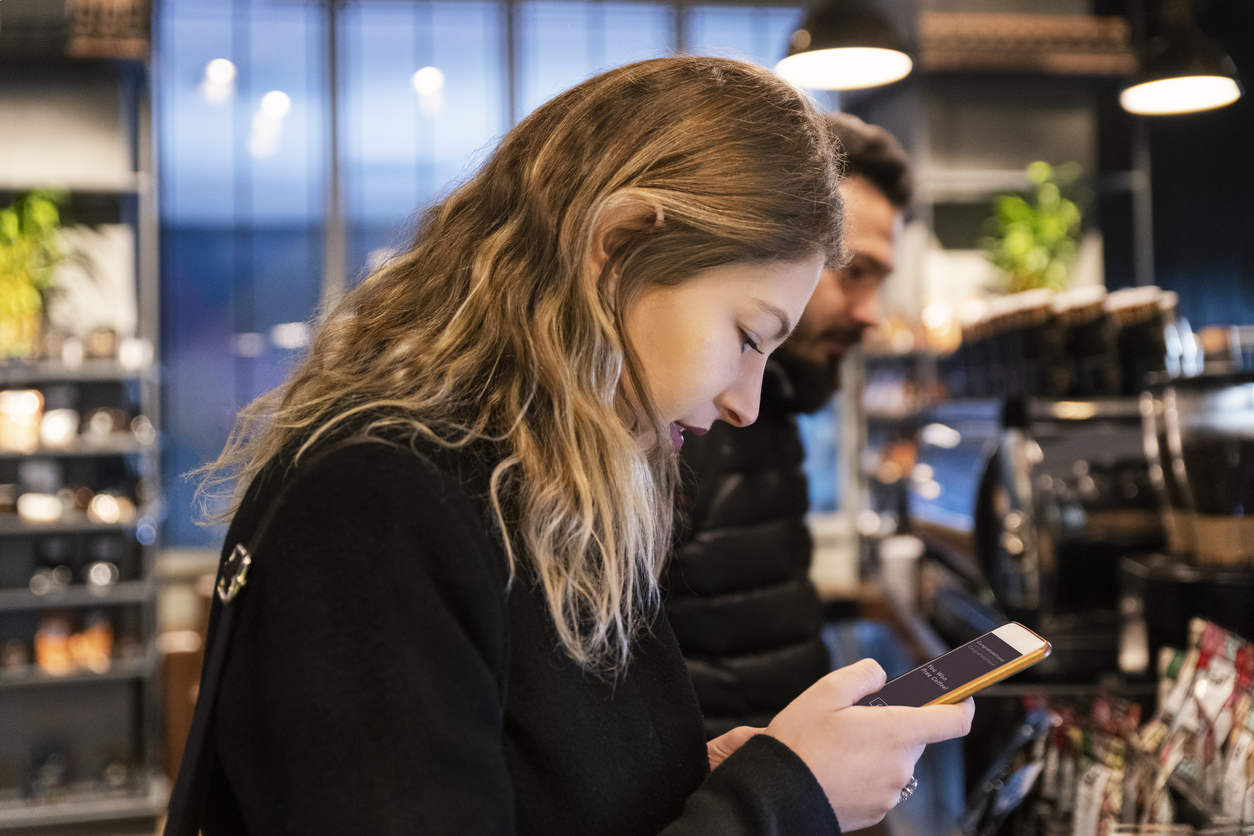
Nowadays, your business can’t afford to not be mobile-friendly. 50% of customers state that they would abandon a business due to bad mobile user experiences, even if they like the brand. But what does optimizing for mobile do for lining up?
Mobile integration means more downtime than ever. Your customers check-in and keep track of their orders through a mobile app or website, leaving them free to run errands, spend more time with the kids, or anything else that doesn’t involve actively loitering around your business.
Waiting in a mobile queue doesn’t feel much like waiting at all. When your customers have the option to stay tuned through their phones, they can literally do anything they want before their turn is called.
When they finally show up at your business, they will be in good spirits and far more open to work with your customer service reps than if they’ve waited for six hours in the same waiting area.
No matter how wonderful your waiting area is, customers would much rather have their time to themselves.
For a business, mobile waiting apps are straightforward to set up. Unlike waiting areas or kiosks, they won’t have trouble scaling alongside the business. With an all-in-one solution, front desk personnel no longer have to worry about wrangling impatient customers. They can focus on doing what they’re supposed to: delivering great customer service.
How do physical queues match up against virtual and mobile queues?
| Physical Queues | Virtual Queues | Mobile Queues | |
| Waiting Time | More time actually waiting in a designated waiting area, less time being serviced. | Customers are free to leave for a quick break post check-in. | Customers can be wherever they want, arrive, and get serviced immediately. Almost no actual “waiting” time. |
| Flexibility | Low: Standing in a physical line for the whole duration of the waiting period. | Medium: Required to check-in physically. No need to stay there for the whole waiting time. | High: Check-in via phone. Can be anywhere until their turn is called. |
| Accessibility | Not accessible to clients with physical disabilities or conditions. | Accessible to anyone. | Accessible to anyone. |
What about ramping up the feeling of urgency by making customers wait? You may be wondering. The psychology of queues points to the fact that people will feel rewarded for receiving service after waiting.
Do you know what your customers want even more? A great customer experience. Making them wait for no reason could ramp up demand, but giving them the freedom to do whatever they want and then immediate service creates a far more positive impression of your business in the long run.
Physical queues may be classic, but they’re clearly outclassed by the convenience of virtual and mobile queues in terms of accessibility, flexibility, and sheer customer experience. There’s a better way to manage your customers, without sacrificing their time or freedom.
Traditional queuing vs. Queue Management System
Everyone is familiar with traditional queuing and the experience of staying in line to wait for some service or another. So what’s a queue management system?
Imagine giving your clients the freedom to manage and maintain their own appointments. Your customer service reps see and respond to schedule changes in real-time. They track performance metrics through an intelligent backend.
Then you have traditional lines. Time to compare the two.
What Queued Means: Traditionally
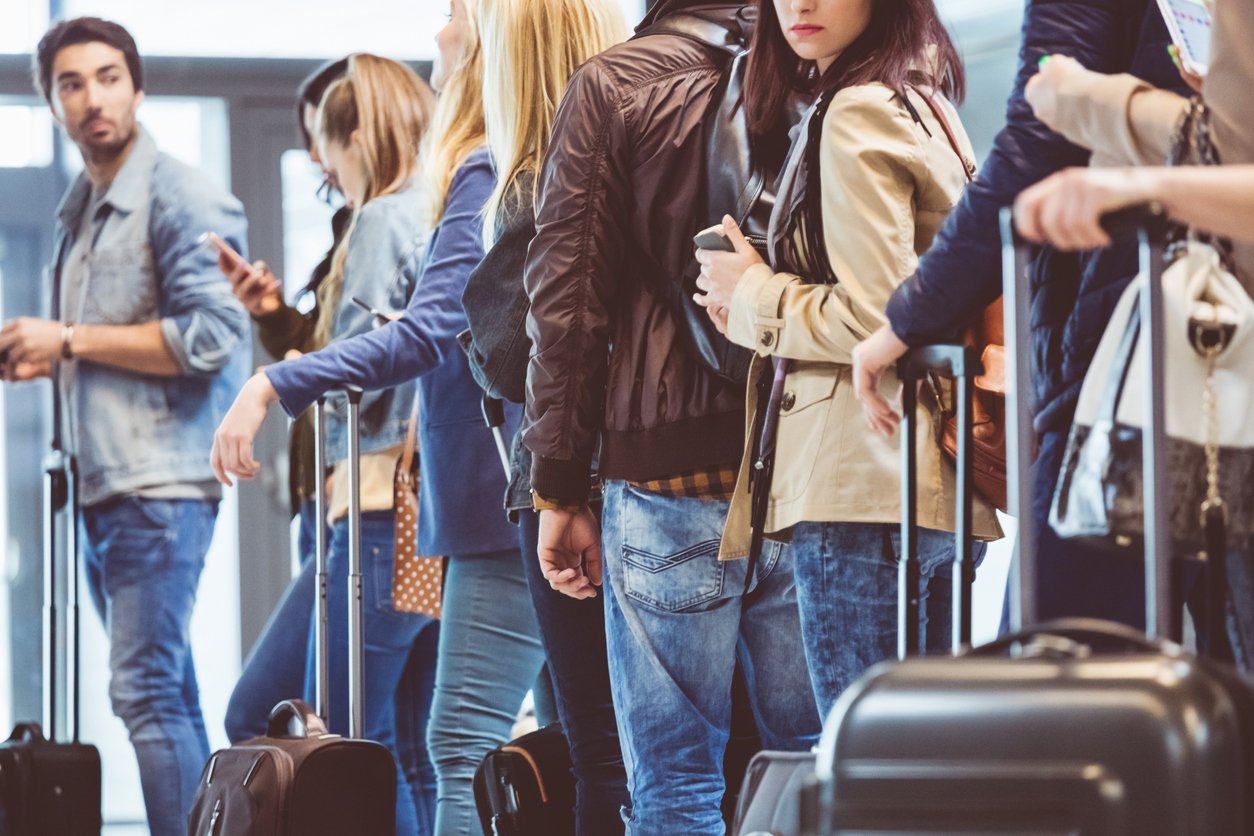
Traditional queuing is something we see almost every day. People stand in line to receive services, usually on a first-come-first-served basis. A few of the most common examples:
- Grocery store lines
- Waiting to use an ATM
- Boarding an airplane
- Bathroom lines
People naturally queue up when there’s enough demand for something and insufficient supply, but most modern-day lines are facilitated by businesses.
What are some strategies businesses use to make sure people obey the law of the line?
- Schedule appointments. Making customers book their own time to visit can shorten the wait. On the other hand, if clients have already taken the time to make an appointment they’ll have even less patience for waiting.
- Waiting areas. Having a designated area for waiting normalizes the waiting experience.
- Signage. Directing people to take action, or simply showing them an estimate of waiting time.
- On-site staff. Guiding people to use the correct facilities, wait in the right area, visit the correct window.
- Lanes. Providing lanes can split up long queues, or at least make them appear shorter.
- Decoration. Remember how customers like to be distracted when waiting? Certain decor accomplishes this purpose by drawing their eye and capturing attention.
Most traditional queuing tactics revolve around slightly misleading the customer, causing them to believe that the wait isn’t too long, or that waiting is simply a part of the experience. You want to keep the line flowing, maintaining movement so that customers stay hopeful that their wait will end soon.
What Queued Means: Queue Management System
Queue management systems are comparatively new, which probably accounts for why they are less commonly seen in daily life. Older organizations are slower to adapt, but you can still experience a few examples of modern queue management:
- Restaurant RSVPs
- Bank appointments
- Department of Motor Vehicles
Unlike traditional lines, queue management systems don’t need quite as much upkeep during the waiting experience. Customers are more willing to distract themselves, so the business can focus more on improving the customer service experience instead of the actual waiting duration.
There are a few strategies businesses should observe while setting up a queue management system:
- Display availability. Show your customers when they can be served to save them time on the road.
- Set up a greeting message. Even virtually, customers want to feel welcomed. A quick message can go a long way.
- Capture personal information upfront. Online registration lets you customize forms. Knowing why your customers are visiting can help you optimize their visit.
- Estimate the waiting time. Not knowing how long they’ll have to wait will make customers impatient. Let them know what to expect.
- Track performance. Collecting data on customer and employee interactions helps you find ways to do better. Know what success looks like to you.
- Brand customization. Consistency in branding increases revenue by 33%. Show customers who you are and what makes you special.
| Traditional queuing | Queue Management System | |
| Waiting Experience | Slow, Boring | Quick, Freeing |
| Personalization | No | Yes |
| Performance Analytics | No (unless manually tracked) | Yes |
| Consistent Branding (Colors, Messaging) | No | Yes |
Queue management software comes in different shapes and sizes for businesses of all kinds. You can find software for healthcare providers, retail, banks, and more.
If you’re uncertain about what type of queue management software to commit to, a more general solution with multiple functionalities is probably your best bet. Skiplino is a great option for anyone who’s looking for a simple-to-use, customizable queue management system.
Conclusion
Queuing has been around for a long time, and it’s clearly not going away.
Having customers who are willing to queue up is a great thing for any business. Your job is to make sure customers have the best experience possible in line, streamlining customer service rep performance, and keeping everything (and everyone in order).
Want to get ahead and supercharge your queuing customer experience? Start a 7-day free trial with Skiplino and see the difference today.
Latest
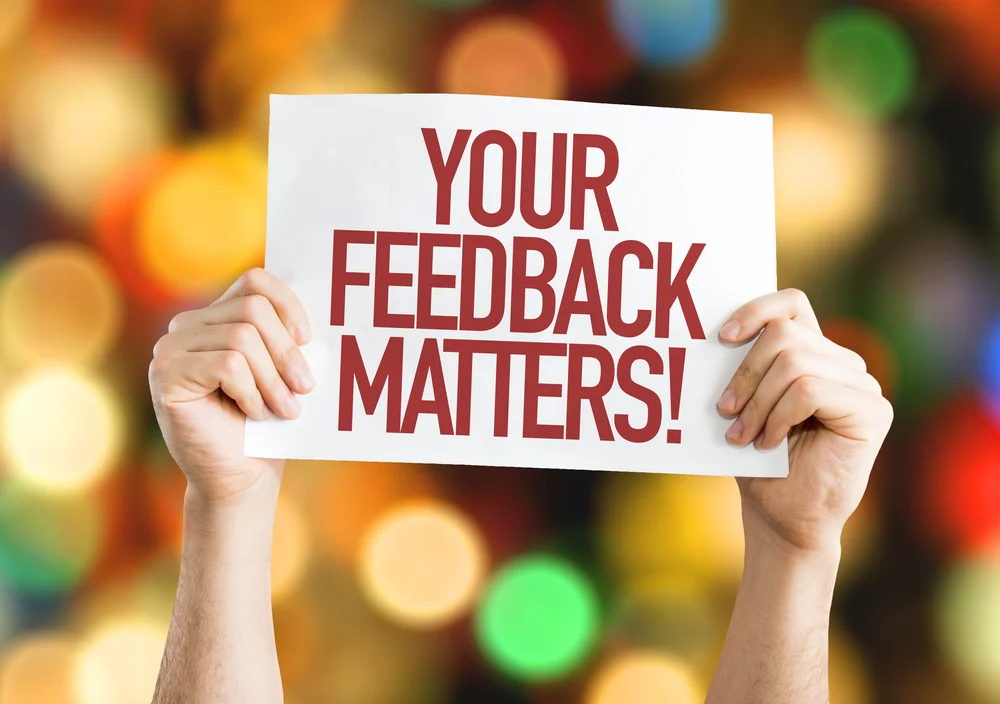


Similar Reads
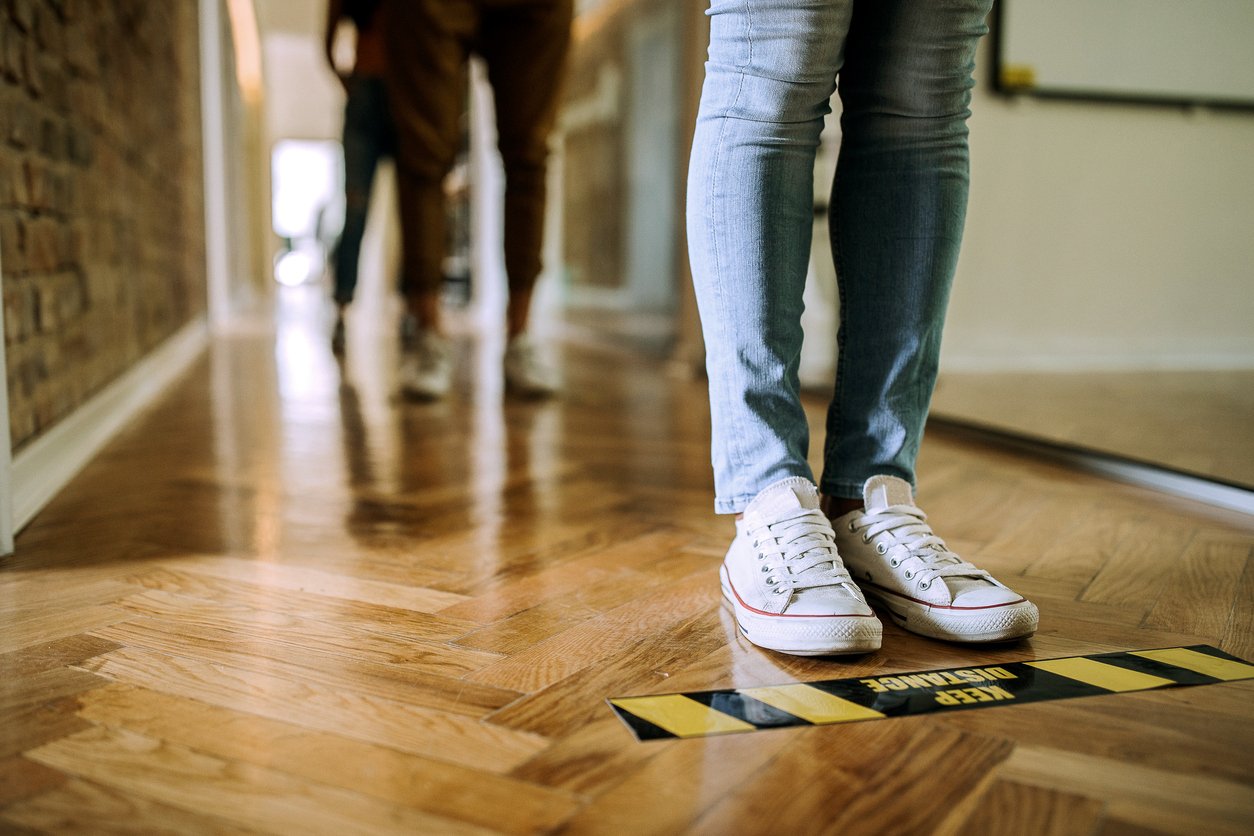
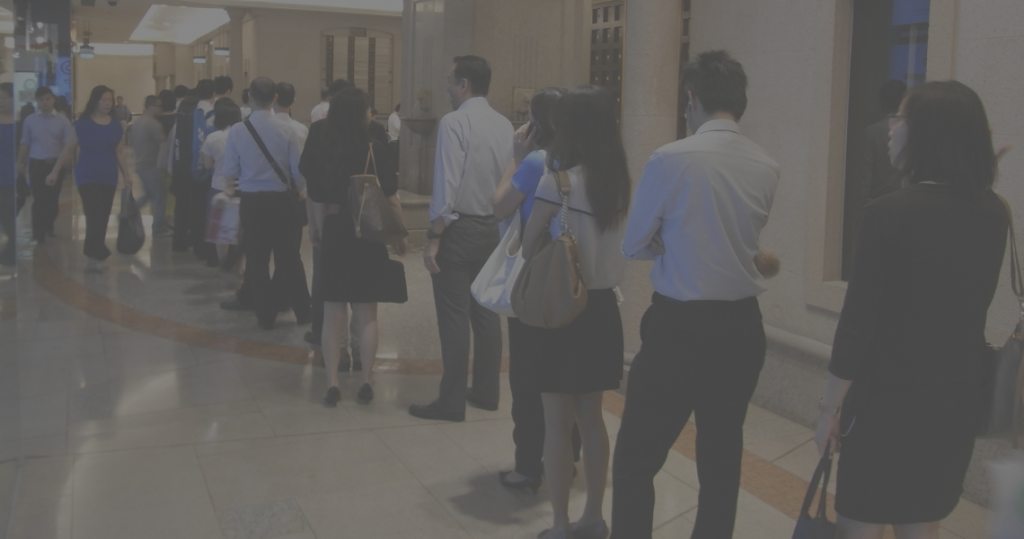
All Rights Reserved @2025 Skiplino Technologies WLL.




